How to harvest onion seeds? It’s a question many gardeners ask, especially those seeking to save seeds and cultivate their own unique varieties. The process of harvesting onion seeds involves a careful observation of the plant’s maturity, followed by meticulous drying and extraction.
This guide will take you through each step, from identifying the right time to harvest to storing your seeds for future use.
From recognizing the telltale signs of a mature onion plant to understanding the importance of proper drying techniques, this comprehensive guide will equip you with the knowledge and skills necessary to successfully harvest and store onion seeds.
Identifying Mature Onions for Seed Harvest
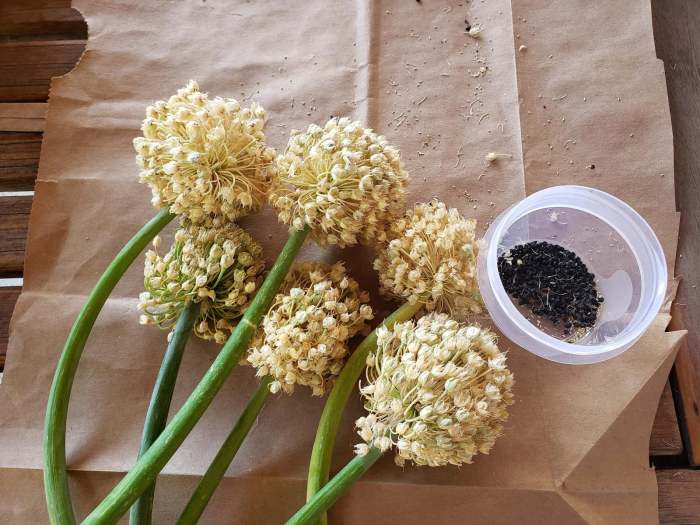
Harvesting onion seeds requires patience and careful observation. You need to wait until the onion plant has reached its full maturity, indicated by several visual cues. These cues ensure that the seeds are fully developed and viable, leading to successful propagation in the next growing season.
Determining Seed Maturity
The most important indicator of seed maturity is the appearance of the flower stalk, also known as the seed head. The flower stalk emerges from the center of the onion plant after the bulb has fully developed. Once the stalk appears, you need to monitor its progress and the plant’s overall health to determine the optimal time for harvesting.
- Flower Stalk Development:The flower stalk will initially be green and upright. As it matures, the stalk will start to bend over, and the seed pods at the top will become more prominent and turn brown.
- Leaf Drying:Another sign of seed maturity is the drying and withering of the onion leaves. This process usually starts at the tips of the leaves and progresses downwards. As the leaves dry, they will turn yellow or brown, and eventually, they will become brittle and fall off.
This drying process indicates that the plant is diverting energy to the seed pods, ensuring they are fully developed.
- Seed Pod Formation:Once the flower stalk has fully matured, the seed pods will be plump and filled with seeds. The seed pods will turn from green to brown, indicating that the seeds inside are ready for harvesting. The seed pods will also become dry and brittle, making them easy to detach from the stalk.
Harvesting Onion Seed Heads
Once your onion plants have matured and the seed heads have dried, it’s time to harvest them. This process requires careful handling to ensure that the seed pods remain intact and the seeds are not lost or damaged.
Harvesting Seed Heads
To harvest the seed heads, follow these steps:
- Cut the seed stalk:Using a sharp knife or pruning shears, carefully cut the seed stalk about 6 inches below the seed head. Avoid cutting too close to the seed head, as this could damage the pods.
- Handle with care:Once the seed head is cut, handle it with care to prevent the pods from falling off.
- Place in a dry, well-ventilated area:After harvesting, place the seed heads in a dry, well-ventilated area, such as a shed or garage. This will allow the pods to fully dry and the seeds to mature.
- Avoid direct sunlight:While drying, avoid exposing the seed heads to direct sunlight, as this can cause the seeds to overheat and become damaged.
Drying Onion Seed Heads
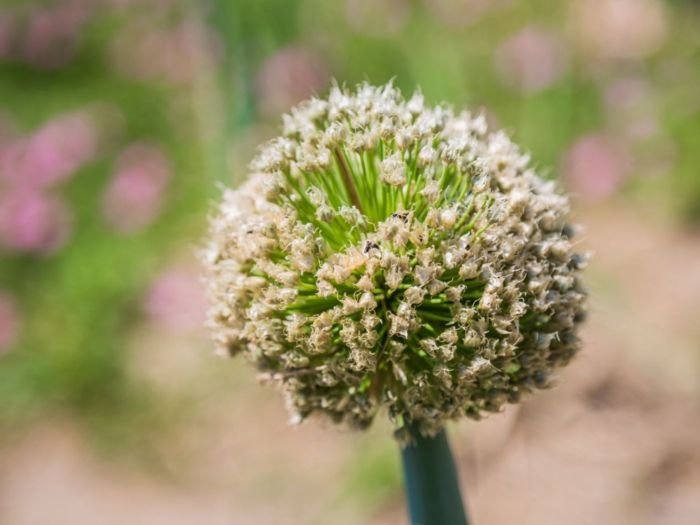
Once you’ve harvested your onion seed heads, it’s crucial to dry them properly to ensure the seeds remain viable and ready for storage. Drying the seed heads allows them to mature fully and prevents mold or mildew growth, which can damage the seeds.
Air Drying, How to harvest onion seeds
Air drying is the most common and simplest method for drying onion seed heads. It involves spreading the seed heads in a single layer on a screen, mesh, or even newspaper in a well-ventilated, dry area. The ideal drying conditions for air drying onion seed heads are:
- Temperature:70-80°F (21-27°C) is optimal for drying onion seeds. This temperature range allows for proper seed maturation and prevents excessive moisture loss.
- Humidity:Low humidity is essential for preventing mold growth. Aim for a humidity level below 50%.
- Airflow:Good airflow is crucial for promoting even drying and preventing seed spoilage. Place the seed heads in a location with good air circulation, such as a well-ventilated room or an outdoor area sheltered from direct sunlight.
Using a Dehydrator
A food dehydrator can also be used to dry onion seed heads, providing a controlled and efficient drying process. Using a dehydrator for drying onion seed heads offers several advantages:
- Faster Drying:Dehydrators accelerate the drying process, typically taking 8-12 hours, compared to several days for air drying.
- Consistent Results:Dehydrators maintain a consistent temperature and airflow, ensuring even drying and preventing uneven seed maturation.
- Protection from Pests:Dehydrators protect the seed heads from pests and insects, ensuring seed viability.
When using a dehydrator, follow the manufacturer’s instructions and set the temperature to 95-105°F (35-41°C).
Note:It’s important to avoid using excessive heat as it can damage the seeds.
Extracting Onion Seeds
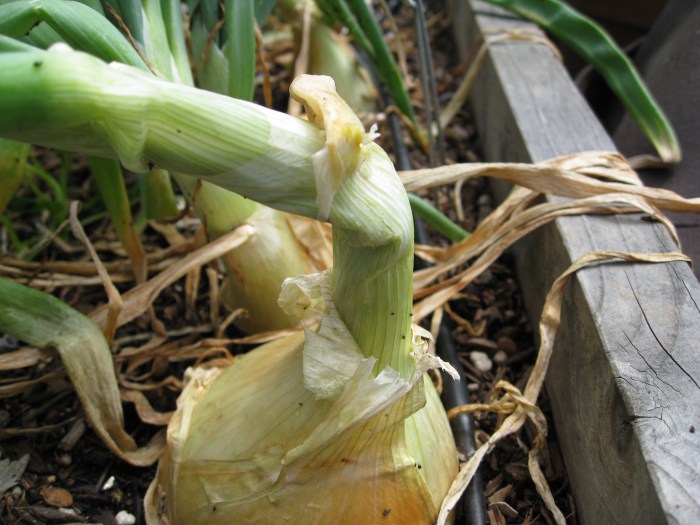
Once the onion seed heads have thoroughly dried, you can extract the seeds. This process involves carefully removing the seeds from the seed pods and cleaning them to prepare them for storage.
Removing Seeds from Pods
To extract the seeds from the dried seed pods, you can use one of two methods:
- Rubbing the Pods Between Your Hands:This is a simple and effective method for small quantities of seeds. Gently rub the dried seed pods between your hands, applying gentle pressure to release the seeds. As you rub, the seeds will fall out of the pods and collect in a container below.
- Using a Sieve:For larger quantities of seeds, a sieve can be helpful. Place the dried seed heads in a sieve and shake them gently over a container. The seeds will fall through the sieve, while the pods and other debris will remain behind.
Cleaning and Separating Seeds
Once the seeds are extracted, they need to be cleaned to remove any debris, chaff, or other unwanted material. Here’s how to clean onion seeds:
- Winnowing:This traditional method uses wind to separate the lighter chaff from the heavier seeds. Spread the seeds on a flat surface and gently toss them in the air, allowing the wind to blow away the chaff.
- Using a Screen:A fine-mesh screen can also be used to separate the seeds from debris. Place the seeds on the screen and gently shake it, allowing the seeds to fall through while the larger debris remains on the screen.
- Handpicking:For smaller quantities of seeds, you can handpick any remaining debris or chaff. Carefully examine the seeds and remove any unwanted material.
Storing Onion Seeds
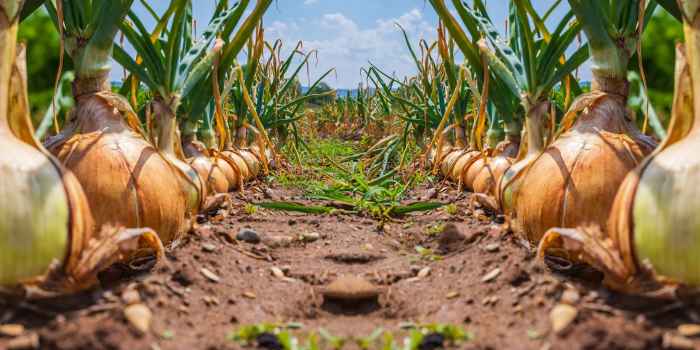
Proper storage is crucial for maintaining the viability of onion seeds, ensuring they germinate successfully when planted. Onion seeds, like other seeds, are susceptible to environmental factors such as temperature, humidity, and light exposure, which can affect their longevity and germination rate.
Storing Onion Seeds in Airtight Containers or Envelopes
Storing onion seeds in airtight containers or envelopes is an effective way to preserve their viability for an extended period. This method helps to create a controlled environment that minimizes exposure to moisture, oxygen, and light, all of which can negatively impact seed viability.
Harvesting onion seeds involves collecting the seed heads after the plant flowers and dries. This can be a time-consuming process, but it’s worth it if you want to save money on seed purchases. While you’re waiting for your onions to mature, consider planting some plants to stop weeds around your garden.
These plants can help to suppress weeds and make your onion patch more productive.
Here’s a guide for storing onion seeds in airtight containers or envelopes:
- Select a suitable container:Choose airtight containers or envelopes made from materials that are non-reactive with seeds, such as glass, plastic, or paper. Glass jars are ideal for long-term storage, while plastic containers are convenient for smaller quantities. Envelopes made from paper or plastic are also suitable for storing smaller quantities of seeds.
Harvesting onion seeds requires patience, as you need to wait for the flower stalks to dry completely. Once the stalks are brittle, you can gently rub the seed heads to release the seeds. While you’re waiting for your onions to flower, you might notice your star jasmine leaves turning red.
This could be a sign of stress, like too much sun or not enough water. Check out this article to learn more about potential causes. Once your onion seeds are harvested, you can store them in a cool, dry place for future planting.
- Prepare the seeds:Before storing, ensure the seeds are dry and free of any debris. If necessary, spread the seeds on a clean, dry surface for a few hours to allow them to air dry completely.
- Add a desiccant:To absorb any residual moisture, consider adding a desiccant to the container. Silica gel packets, often found in packaged goods, are a common desiccant. You can also use rice or dry beans as a natural desiccant.
- Label the container:Label the container clearly with the type of onion seed, the date of harvest, and any other relevant information.
- Store in a cool, dry, and dark place:Store the container in a cool, dry, and dark place, ideally with a temperature between 32°F and 41°F (0°C and 5°C). Avoid storing seeds in areas with high humidity or fluctuating temperatures.
Onion seeds stored properly can maintain their viability for several years, ensuring successful germination when planted.
Testing Onion Seed Viability
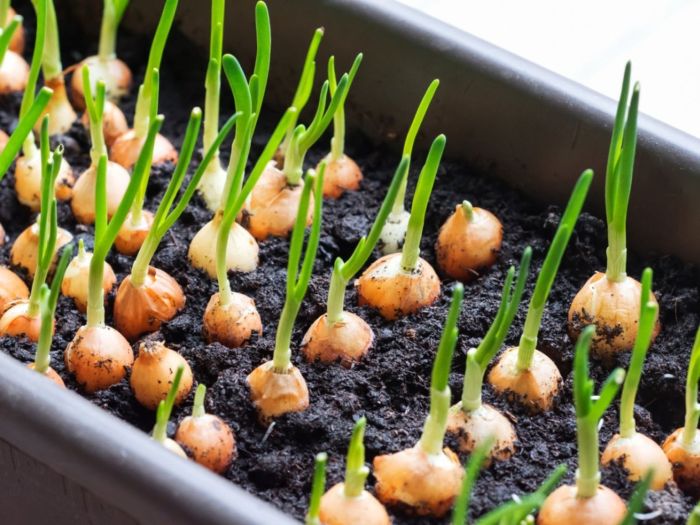
Before planting onion seeds, it’s crucial to assess their viability, ensuring they have the potential to germinate and grow. This process helps avoid wasting time, effort, and resources on seeds that won’t sprout. Several methods can be employed to test the viability of onion seeds.
Germination Tests
A germination test provides a reliable estimate of the percentage of viable seeds in a batch. It involves creating an environment that simulates ideal germination conditions and observing the seeds’ sprouting rate.
- Prepare a Germination Medium:Use a moist paper towel, vermiculite, or seed-starting mix.
- Select a Sample:Take a representative sample of 25-50 seeds from the batch.
- Place Seeds on Medium:Spread the seeds evenly on the chosen medium, ensuring they are not overcrowded.
- Maintain Ideal Conditions:Keep the medium moist and the environment warm (around 70-75°F or 21-24°C).
- Observe Germination:Count the number of seeds that germinate within 7-14 days.
- Calculate Viability:Divide the number of germinated seeds by the total number of seeds tested and multiply by 100 to get the germination percentage.
Visual Inspection
While not as accurate as germination tests, a visual inspection can provide a quick assessment of seed quality.
- Check for Damage:Look for any signs of physical damage, such as cracks, holes, or discoloration, as these can indicate reduced viability.
- Assess Size and Shape:Onion seeds should be plump, firm, and have a consistent shape. Seeds that are shriveled or misshapen may have lower viability.
- Examine Color:Healthy onion seeds typically have a dark brown or black color. Seeds that are lighter in color or have a greenish hue may be less viable.
Improving Seed Viability
Proper handling and storage practices can significantly improve onion seed viability.
- Dry Seeds Thoroughly:After harvesting, ensure the seeds are completely dried before storage. Excess moisture can lead to mold and decay.
- Store in Cool, Dry Place:Store onion seeds in airtight containers in a cool, dry, and dark location.
- Avoid Extreme Temperatures:Extreme heat or cold can damage seeds, so keep them away from direct sunlight, heating vents, or freezing temperatures.
- Label and Date Seeds:Label each container with the seed variety and date of harvest to ensure proper identification and rotation.
Final Conclusion: How To Harvest Onion Seeds
Harvesting onion seeds is a rewarding experience, offering a sense of accomplishment and the promise of future harvests. By following the steps Artikeld in this guide, you can ensure that your seeds are properly collected, dried, and stored, guaranteeing their viability and allowing you to enjoy the fruits of your labor for seasons to come.
Whether you’re a seasoned gardener or just starting out, this guide provides a practical and accessible approach to seed harvesting, empowering you to grow your own delicious onions year after year.